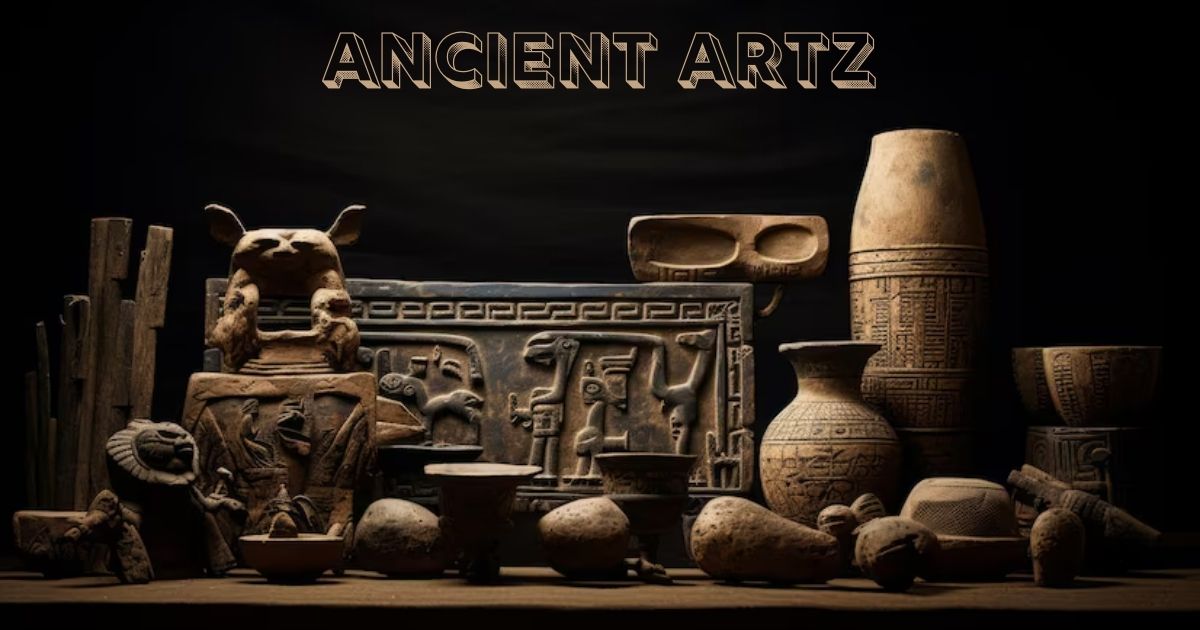Ancient artz stands as a testament to human creativity and cultural expression from eras long before our own. These artworks, ranging from cave paintings to monumental sculptures, have influenced modern art and offer insight into the social, religious, and political structures of past civilizations. But why does ancient art still resonate with us? It might be because these pieces connect us to our shared humanity, reminding us of the universal themes of life, death, and the quest for meaning.
Origins of Ancient Artz
Ancient artz has roots in the prehistoric period, with the earliest known creations dating back to 40,000 years ago. These early works were primarily found in caves and were made with rudimentary tools, depicting animals, hunters, and handprints. These visuals offer a window into the lives of early humans, providing an understanding of their environment and survival instincts.
Cave Paintings: The Dawn of Expression
Cave paintings, such as those found in Lascaux, France, are some of the earliest forms of human artistic expression. These drawings, often of animals like bison and deer, were created using natural pigments. What makes these paintings fascinating is their attention to detail and the skillful use of color. They reflect not only a deep connection to nature but also the significance of these animals in the survival of early human communities.
Egyptian Art: A Symbol of Eternity
Egyptian Ancient artz is iconic for its representation of the afterlife and the gods. The ancient Egyptians believed that art could ensure a smooth transition to the afterlife. One of the most recognizable forms of Egyptian art is the hieroglyphs. These were not just written language but also a highly stylized form of art, combining beauty with communication. Sculptures, tomb paintings, and the towering pyramids are further proof of their incredible artistic achievements, all designed with eternity in mind.
Greek Art: The Pursuit of Perfection
Ancient Greek art laid the foundation for the Western art tradition. From the Classical period, we see a movement towards idealized beauty, particularly in sculptures. Greek statues, such as the Venus de Milo and the Discobolus, exemplify the human form’s perfect proportions and naturalism. This emphasis on harmony and balance in Greek art continues to influence artists even today, especially in architecture and sculpture.
Roman Art: Power and Grandeur
Building on the achievements of the Greeks, Roman art reflected the grandeur of the Roman Empire. Much of Roman art was functional, aimed at glorifying their emperors and military conquests. Frescoes, mosaics, and busts of emperors filled public spaces and private homes alike, immortalizing the political and social power of Rome. The use of perspective and realism in Roman mosaics and paintings also showcased an advanced understanding of visual techniques.
Chinese Art: Harmony with Nature
In ancient China, art was deeply connected to philosophy and religion, particularly Confucianism, Taoism, and Buddhism. Chinese artists mastered the art of calligraphy, ink wash painting, and sculpture, focusing on balance, simplicity, and harmony with nature. The Terracotta Army, created during the reign of Emperor Qin Shi Huang, is one of the most impressive feats of ancient Chinese art. Each figure is unique, symbolizing the emperor’s might and his connection to the divine.
Mesoamerican Ancient Artz: Ritual and Sacrifice
Ancient Mesoamerican civilizations, including the Maya, Aztecs, and Olmecs, produced striking art characterized by its connection to ritual and sacrifice. Stone carvings, pyramids, and frescoes often depicted gods, warriors, and the act of human sacrifice, which was central to their belief systems. The intricate detail of their stonework, particularly in temples and ceremonial masks, highlights their advanced craftsmanship and spiritual devotion.
Indian Art: Spiritual Reflection
Ancient Indian art is largely religious, with Hinduism and Buddhism serving as the central themes. Intricate sculptures of gods and goddesses, as well as the stupas, or dome-shaped shrines, reflect a deep spirituality. The Ajanta Caves, filled with ancient Buddhist paintings and sculptures, are a fine example of Indian devotion to art as a means of reaching enlightenment.
African Art: Power and Ritual
Ancient Ancient artz, much of which comes from Sub-Saharan Africa, was deeply intertwined with power and ritual. Artifacts such as masks and statues were used in religious ceremonies and to represent gods, ancestors, or animals. The bronze sculptures of Benin, which depict royal figures and warriors, demonstrate the highly developed artistic skills of ancient African societies.
Middle Eastern Art: Innovation and Ornamentation
Ancient Middle Eastern art, particularly from Mesopotamia and Persia, is marked by its use of intricate patterns and ornamentation. Ziggurats, massive structures used for religious purposes, as well as the beautiful Ishtar Gate of Babylon, showcase the blend of function and beauty in their designs. The invention of cuneiform writing, one of the earliest writing systems, also contributed to the region’s artistic and cultural legacy.
Sculptures: The Ultimate Expression of Ancient Art
Sculpture was a dominant form of artistic expression in many ancient cultures, from the massive stone figures of Easter Island to the delicate marble statues of Greece. Sculptors paid meticulous attention to detail, often attempting to portray the divine or idealized human forms.
The Role of Religion in Ancient Art
Religion was the driving force behind much of ancient art. Whether it was the pharaohs of Egypt commissioning massive statues to honor the gods, or the Greeks constructing temples adorned with sculptures of deities, art served as a bridge between the mortal and the divine.
Preservation of Ancient Art
Despite the passage of millennia, many ancient artworks have been preserved due to the materials used or their location in arid climates. Stone, pottery, and certain pigments have withstood the test of time, allowing us to study and appreciate these cultural relics.
Conclusion
Ancient artz provides us with a powerful connection to the past. Its beauty, intricacy, and profound symbolism continue to inspire and influence modern culture. Whether it’s the detailed cave paintings of prehistoric Europe, the grand sculptures of Greece and Rome, or the intricate patterns of African and Middle Eastern art, these works remind us of our shared heritage and the universal quest for meaning and beauty.
FAQs
Why is ancient art still relevant today?
Ancient art continues to influence modern culture and offers insights into human history, creativity, and the development of civilization.
How was ancient art preserved over time?
Many ancient artworks were preserved due to their durable materials, such as stone or metal, and their location in climates that helped protect them from decay.
What materials were commonly used in ancient art?
Artists in ancient times used materials like stone, clay, metal, and natural pigments to create their works.
What are the main themes of ancient art?
Ancient art often focused on themes of religion, power, and the natural world, reflecting the values and beliefs of the society in which it was created.
How did ancient art influence modern art?
Many artistic techniques, themes, and forms developed in ancient times have influenced contemporary art, particularly in areas like sculpture and architecture.











